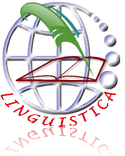Derivational and Inflectional Morphemes in Pak-Pak Language
DOI:
https://doi.org/10.24114/jalu.v1i1.377Abstract
The objectives of this study are to find out the derivational and inflectional morphemes in Pak-Pak language in terms of word class, form and meaning and to find out the similarities and differences of the derivational and inflectional morphemes in English and Pak-Pak languages. This study was conducted by using descriptive qualitative. The data were obtained by applying a documentary techique. The findings showed that there were some similarities and differences of derivational and inflectional morphemes in English and Pak-Pak languages. The similarities are both languages are formed by prefix and suffix. Both languages have similar, they can attached by noun, verb, adjective and adverb. They also have differences, the formation of derivational in English is only formed by prefix and suffix. While in Pak-Pak languages are forming by prefix, suffix, infix, and confix. Inflectional in English is only formed by suffix. While in Pak-Pak languages, they are prefix, suffix, infix, and confix. In conclusion, there are similarities and differences of derivational and inflectional morphemes between English and Pak-Pak languages. Key Words: Derivational, inflectional morphemesDownloads
Published
2012-04-01
Issue
Section
Articles
License
Copyright (c) 2012 Agustina Situmorang, Tina Mariany Arifin

This work is licensed under a Creative Commons Attribution-ShareAlike 4.0 International License.
Authors who publish with this journal agree to the following terms:
- Authors retain copyright and grant the journal the right of first publication with the work simultaneously licensed under a Creative Commons Attribution License that allows others to share the work with an acknowledgment of the work's authorship and initial publication in this journal.
- Authors are able to enter into separate, additional contractual arrangements for the non-exclusive distribution of the journal's published version of the work (e.g., post it to an institutional repository or publish it in a book), with an acknowledgment of its initial publication in this journal.
- Authors are permitted and encouraged to post their work online (e.g., in institutional repositories or on their website) prior to and during the submission process, as it can lead to productive exchanges, as well as earlier and greater citation of published work (See The Effect of Open Access).
- This work is licensed under a Creative Commons Attribution-ShareAlike 4.0 International License.

